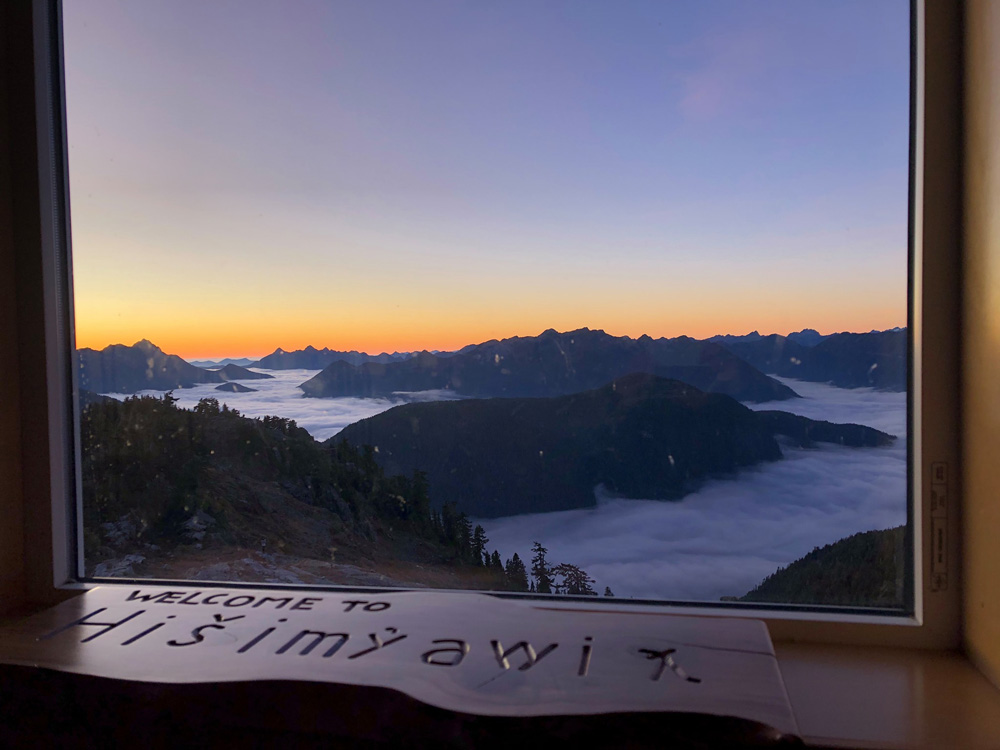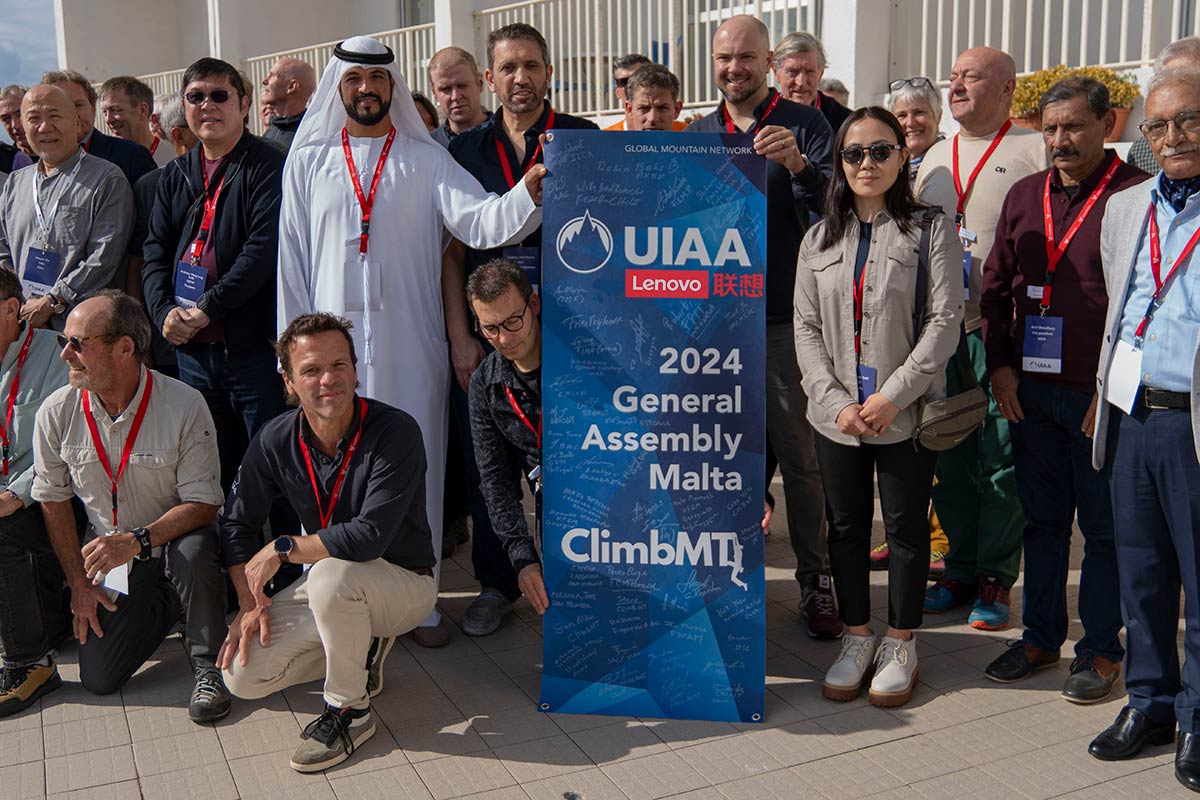OVERVIEW
The Vancouver Island section of the Alpine Club of Canada built and is operating a new mountain hut since 2019. Being given a name, according to First Nations tradition, means being given responsibility as well as privilege. Hišimy̓awiƛ, “Gathering Together”, implies that the section is tasked to ensure people have a place to gather, to share, to work and to play together and most importantly, to look after the land from now and into the future. In a next step, they plan to equip the self-sustaining hut with additional solar capacity and stabilise wind generation.
—
Vision, goals and objectives
The project involves the construction and operation of a mountain hut on Vancouver Island, British Columbia, Canada. Construction of the hut was completed in 2019 and the hut has proven to be well used since then.
Vision
- To create a place where people, projects and ideas “Gather Together”.
- To do this in a manner that instills respect for the land and its heritage now and into the future.
- To build Vancouver Island’s first heated alpine hut that is open to the general public and accessible year-round by self-propelled transportation only.
- To provide back country accommodation for those who want to hike, climb, ski or snowshoe in the alpine and to do so in a safe, affordable manner.
- To build strong relationships with local First Nations
Goals
The Alpine Club of Canada VI Section set the following goals upon commencement of the hut project. The following lists each goal and its present status:
- To find a suitable location for the site and to obtain permissions and permits to do so.
Status: The hut is located approximately 35km west of the City of Port Alberni at an elevation of 1,300m on the scenic West Ridge of 5040 Peak. Permits and permissions are all approved. - To build a self-sustaining hut with solar and wind power capacity for year-round accommodation
Status: Completed. After 2 years of use, we now plan to increase the solar capacity and stabilize wind generation. - To be self-funded by fees and donations.
Status: Rates set low enough with a break-even budget except for new capital expenses. - To provide a safe place for learning.
Status: The hut is a base to lead educational workshops on mountain skills. The hut is used as a training facility for a range of courses related to mountain safety (e.g. avalanche preparedness, navigation, rescue, technical climbing, etc). Casual users increase their knowledge about the back country through informal contacts at the hut. - To expand relationships with groups who may be marginalized in the mountaineering environment, but still have an interest in exploring the back country and/or environmental sustainability.
Status: To date, local First Nations groups, local businesses, Alpine Club of Canada Vancouver Island Section group camps, youth groups, mountain guides, Women’s Groups, and LGTBQ groups have all used the hut.
Objectives met
- ACCVI built a hut of approximately 800 sq. ft. and sleep 12 people. The building footprint is 26 ft.x32 ft.
- Heating is by a wood pellet fire place and cooking is by propane stoves.
- A solar array and wind turbines generate power that is stored in a bank of batteries.
- Human waste is managed in a state-of-the-art urine separating outhouse.
- A greywater system ensures appropriate management of additional waste water.
- The hut is used by a wide range of users for courses, adventures and cultural events.
- A volunteer hut committee manages day-to-day administrative activities.
Expected implementation and outcomes
Based on two years of operational experience, some improvements and enhancements to the project have been identified that would assist in achieving the vision and goals. It was observed that winter weather conditions are more severe than originally anticipated. Fuelled by social media reports, the hut and surrounding area utilization is greater than anticipated and it has been noted that many of these visitors have minimal understanding of back country etiquette or safety. This influx of visitors has led to environmental impacts on the surrounding area.
Key Tasks and Activities
IMPROVE HUT WEATHER RESILIENCE A solar array and wind turbines generate power that is stored in a bank of batteries.
- Increase solar power from 6 to 20 panels.
- Change back-up generators for ease of use by hut users.
- With winds up to 170 km/hour, need to consider how best to build a sustainable wind power system.
ENSURE RESOURCE AND WASTE DISPOSAL SYSTEMS ARE PROPERLY MAINTAINED
- Train custodians to maintain systems.
- Schedule regular and ongoing maintenance.
- Post proper signage in critical areas.
IMPROVE USER UNDERSTANDING OF BACK COUNTRY ETIQUETTE AND SAFETY IN THE MOUNTAINS.
- Monitor use of hut and surrounding area to preserve the natural environment. Develop signs – safety, warnings of back country realities – bears, weather, avalanches.
- Add a second urine separating toilet to accommodate the increasing use of the back country.
- Build a strong volunteer network within which to share knowledge whether technical, environmental, or social.
Expected outcomes
- To increase availability of power for lighting and heat to 100% (year-round).
- To improve back country etiquette and reduce human impact through signage and improved facilities.
- To open up new opportunities for people to explore the surrounding areas for mountaineering, skiing, climbing and hiking by partnering with other key stakeholders.
- To increase the number of volunteers and active supporters of the project.
New Milestones based on experience to date
- Expand solar panels from 6 to 20 by fall 2021
- Update wind power generation by summer 2022
- Build relationships with 5 new stakeholder groups by 2022.
- Invite First Nations youth to use the hut twice yearly for free and negotiate with other targeted groups to use the hut.
- Build a kiosk at the trail head with information about trail conditions, respect for the environment, safety issues, and First Nations history of the area by 2022.
- Build a second urine separating toilet for public use by 2022.Climbing, mountaineering or outdoor sport focus
Local hikers and mountaineers have accessed the hut location at 5040 Peak, Triple Peak, and surrounding area for many years. The area is also culturally significant as the headwaters for six local First Nations. People have come to this area for many years for hiking, back country skiing, and mountaineering. With a year-round hut in the area, opportunities for further explorations and understanding of the back country have expanded substantially. Since 2017 when the first shovels went into the ground, people have developed new trails to the hut. The regular trail takes an average hiker about 2 to 4 hours to access the hut from the trail head which is 11 km from the highway on a rough 4WD single-lane gravel road mainly used for logging. All trails are rough and not suited for casual walkers. Trails have been expanded as people explore new routes across mountain ridges to surrounding mountains.
A new ski trail takes about 6.5 to 10 hours to the hut from a starting place at the main highway (depending on snow conditions). See https://accvi.ca/5040-peak-hut/hut-access/ for trail access to the hut.
Skiing – Levels range from expert in some areas to survival skiing between snow and mud in other areas. Conditions vary from steep access trails to moderate to steep open bowl and chute terrain to tight trees and gladed sub-alpine terrain.
Rock Climbing – There are rocks near the hut that can be used for short climbs (5.4 to 5.9) and some ACCVI members are developing a 3 pitch climb on a nearby ridge ranging from 5.8 to 5.11.
Hiking – The hut is accessible for experienced hikers. To date, the oldest hut user was 86 and took 6.5 hours to access the hut and the youngest was 6 weeks old. Yoga groups have also used the hut for yoga retreats.
Mountaineering – There are a range of options: Nahmint Mountain is Class 3-4 scrambling and can be done in a long day from the hut or as an easier overnight trip. The ridge along to Jack’s Peak and Adder takes two days. From Marion Main, Triple Peak is accessible, low 5th class on summit block.
Best practice in mountaineering and mountain-based sports for mountain protection
First Nations elders and leaders worked with ACCVI to choose the hut site. “The ridges of 5040 Peak form the boundaries of several large watersheds. Therefore, they also form the natural boundaries for at least six First Nations including Yuułuʔiłʔatḥ (Ucluelet), Toquaht, Tla-o-qui-aht, Tseshaht, Hupačasath and Uchucklesaht. Like the hub of a wheel, 5040 Peak is a special nexus and an ideal location to bring together youth from the region. I do not know if there is a better single viewpoint than the summit of 5040 Peak to observe and appreciate the traditional territories of so many First Nations.” C. Jensen, project manager.
Protection of the environment was key from the start. The hut was designed to use solar power, pellet stoves, not local firewood, and a state-of-the-art toilet which eliminated the need for solid waste removal out of the area by helicopter.
Nature powers the hut for instance through solar panels. The solar capacity needs to be increased to ensure renewable electricity year-round. As well, once the potential for wind power was realized, the decision was made to take advantage of the extreme winds to include wind power. A weather station was added to determine the best wind power configuration. The weather station also helps to monitor avalanche conditions in this area of the mountains.
To discover more about the UIAA Mountain Protection Award please click here.



